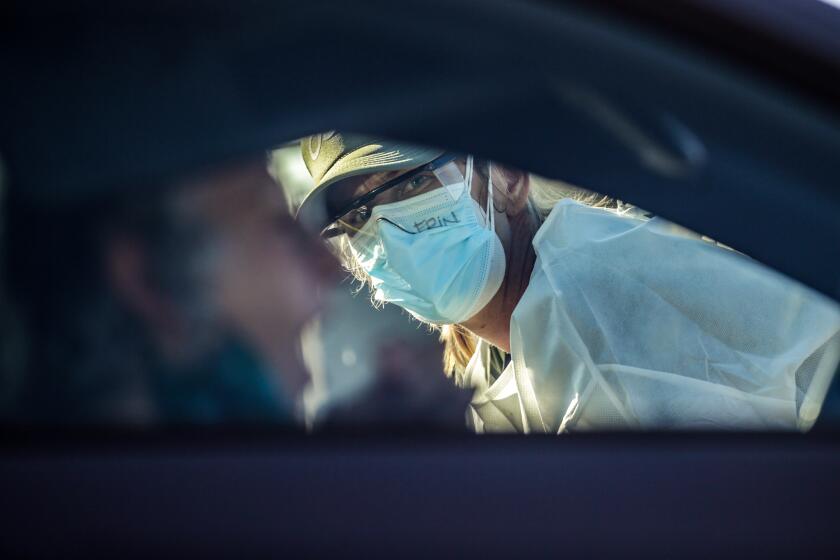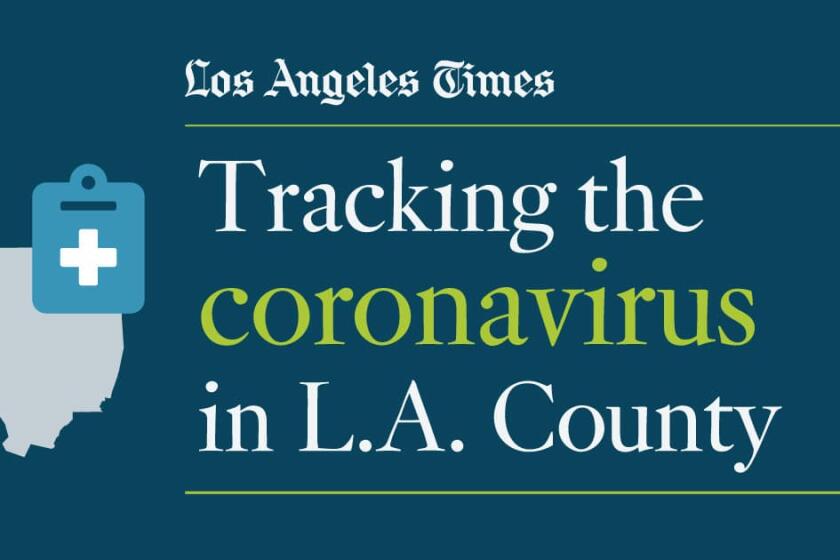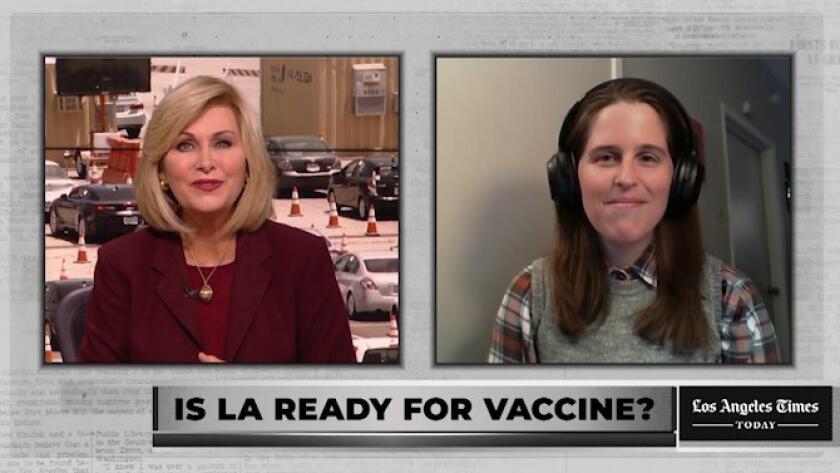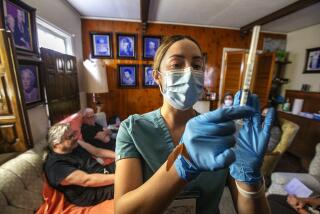When the vaccine is ready, will L.A. County be able to distribute it?
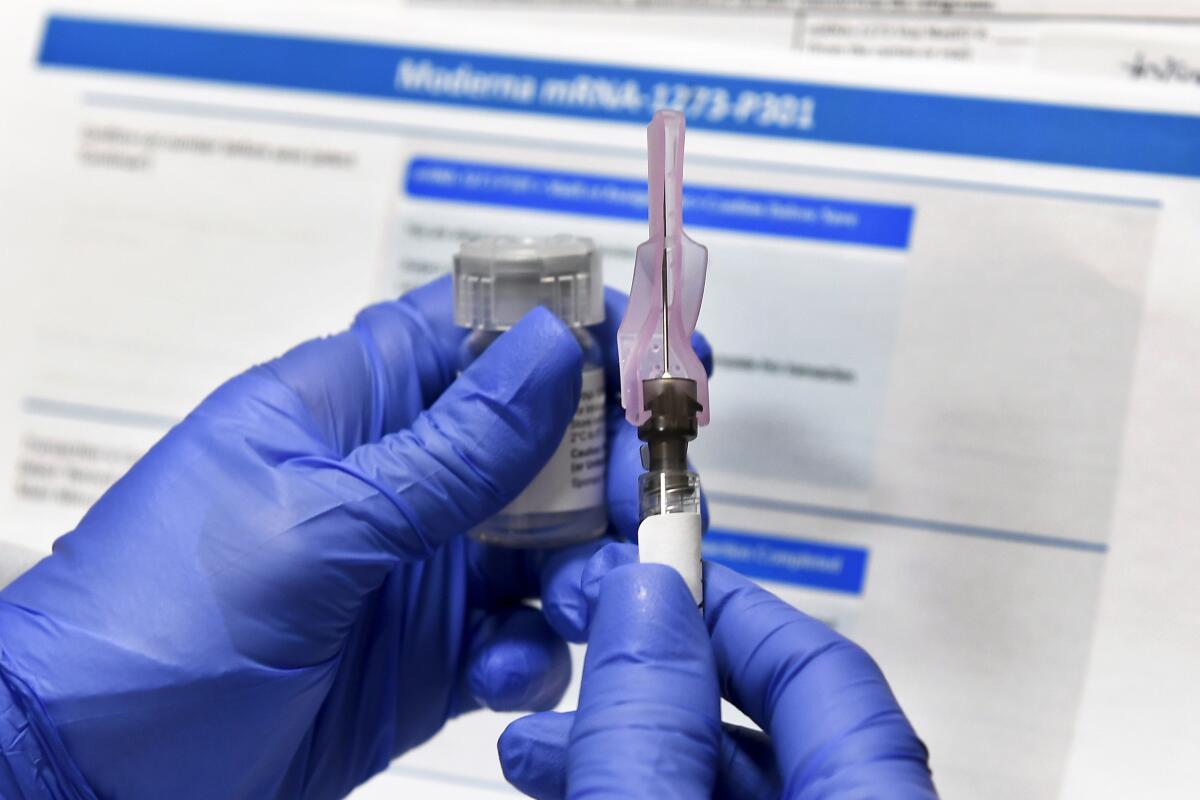
- Share via
The scientists have designed the vaccine. Now, government bureaucrats must figure out how to quickly and fairly distribute the life-saving COVID-19 medication.
For Los Angeles County, this effort has already included acquiring 16 ultra-cold storage freezers to be installed across the region. They can store tens of thousands of doses at temperatures as low as minus 86 degrees Celsius.
But the bigger question involves where the vaccine will go from there. It’s shaping up to be the largest and most complex public health effort in the county’s history, and concerns are growing that officials are falling behind. The county has already struggled with another essential element of the pandemic response: providing widescale coronavirus testing.
Distributing the vaccine in a safe and equitable manner is an even more vital task, and some officials have already expressed their concerns.
County Supervisor Janice Hahn recently called the county’s preliminary plans “too vague.” She said they failed to address key logistical issues, such as how the county would store the Pfizer vaccine, which must be kept at minus 70 C. Supervisor Sheila Kuehl wondered how logistically the county would keep doses of the vaccine cold enough to transport.
Public health officials say if L.A. County’s numbers remain high, a new stay-at-home order could be implemented next week.
And Supervisor Hilda Solis wanted to see more explanation for how the county would equitably dole out the vaccine and ensure that communities of color have ample access.
“I’m just going to implore you... to really be ready,” Hahn told Los Angeles County Public Health Director Barbara Ferrer at a recent board meeting. “I just don’t think we can afford some lag time in knowing how we’re going to distribute this vaccine.”
“We’ll be ready,” Ferrer said. “I promise.”
For now, the county is formulating a priority list for getting the vaccines, which will be free to any resident who gets vaccinated. First in line will be healthcare workers on the frontlines of the COVID-19 pandemic. Essential workers at high risk of contracting the coronavirus would be among the next most likely candidates, based off preliminary guidance from state and federal officials.
Nursing home residents and employees will also likely be a priority population in the early phases of the vaccine’s rollout. People with serious medical conditions, including cancer, chronic kidney disease, serious lung disease and sickle cell disease, and residents 65 and older are also included in the county’s preliminary plan as key populations to vaccinate.
For others, the wait could take months.
Dr. Jeffrey Gunzenhauser, Los Angeles County chief medical officer, said a 35-year-old with no health risks who isn’t an essential worker probably won’t be able to get a vaccine until at least spring of next year.
The latest maps and charts on the spread of COVID-19 in Los Angeles County, including cases, deaths, closures and restrictions.
“I could be wrong — maybe more vaccine will be available — and it could very well be that people don’t want to take the vaccine, so we might expand it to other groups if we have more supply,” Gunzenhauser said. “There’s a lot of unknowns, so this really is guesswork.”
Eventually, the vaccine will be widely available to any resident, but county officials are still grappling with how to make them most accessible.
Hahn would like to see the county use schools as distribution sites, an idea that L.A. Unified Supt. Austin Beutner supports. Solis has asked public health officials to explore using libraries, senior centers and clinics in underserved communities. The county has also considered expanding current COVID-19 testing sites to offer vaccination as well.
Some of the first doses of vaccine are expected to be stored at Cedars Sinai Medical Center. The hospital was one of a handful of healthcare facilities designated by the state to receive early vaccine shipments because of its cold-storage capacity, the county public health department said. About 20 L.A. County hospitals applied, Gunzenhauser said.
It’s not yet clear how much vaccine California or L.A. County will receive.
The federal government has placed an initial order with Pfizer for 100 million doses, and under the agreement, can acquire up to an additional 500 million doses.
At least in the beginning, the federal government will allocate a certain amount of vaccines to each state. California will apportion its share mostly among local health departments, with the remainder going to state facilities and some healthcare systems with locations in multiple counties, like Kaiser Permanente.
Because the Pfizer vaccine requires an ultra-cold temperature “cold chain” — a precise planning process that ensures it’s kept at a specific temperature while transported and stored — the county’s Department of Public Health is buying five ultra-cold freezers in addition to three from the state, which will be placed strategically across the county.
The freezers, purchased with $55,000 from the county’s federal coronavirus relief money, are expected to arrive by December. A separate agency, the county Department of Health Services, recently received eight freezers it ordered to store the Pfizer vaccine, which it will eventually distribute to patients at the county’s four public hospitals and 27 health clinics. With such high demand, there was a backlog, said Dr. Christina Ghaly, the county’s director of health services.
California and other states are racing to finalize plans for who will get the first doses of COVID-19 vaccines and how they will be delivered.
“Obviously, for hospitals that have been able to acquire the freezers, they can serve as a hub-and-spoke-like model,” Ghaly said of agency’s potential role in the county’s distribution plan.
The logistics will be less complicated for the second vaccine, Moderna‘s, because it doesn’t require an ultra-low temperature cold chain, county officials said.
Gunzenhauser said the entire planning process is “really a fast-moving train” and that it could change as more becomes known about the vaccine and how much will be available.
“The government’s plan is have two doses for every person,” he said.
For L.A. County, that’d be more than 20 million doses.
The county has already struggled with the challenges of the pandemic, in particular in trying to create a testing infrastructure. Officials scrambled for testing supplies and to find appropriate sites, initially failing to provide testing sites equitably in communities of color.
The county isn’t alone in the meeting the task.
Gov. Gavin Newsom has announced a stay-at-home order affecting most of California.
Every state and local health agency in the country is making plans amid uncertainty, and many say their decisions hinge on first knowing which vaccine will be available, according to an analysis by Kaiser Family Foundation. Officials in other countries, including Canada, Scotland and England, share similar concerns.
In the Bay Area county of Contra Costa, officials are advising residents to not let pandemic fatigue set in.
“Hunker down, stay at home, wear masks and avoid gatherings to get through the dark winter to a glorious vaccine spring,” said Dr. Chris Farnitano, the county’s health officer, at recent public meeting.
Ferrer has given similar cautionary advice, and emphasized that the county’s distribution effort will benefit from its experience providing thousands of flu shots a year, as well as learning from the 2009 H1N1 pandemic how to distribute medicine quickly.
Although unprecedented, it is not impossible, she said.
“We will absolutely be ready to distribute as soon as we have vaccine to distribute,” Ferrer said at the Board of Supervisors meeting.
Times staff writer Noam N. Levey contributed to this report.
- Share via
Watch L.A. Times Today at 7 p.m. on Spectrum News 1 on Channel 1 or live stream on the Spectrum News App. Palos Verdes Peninsula and Orange County viewers can watch on Cox Systems on channel 99.
More to Read
Sign up for Essential California
The most important California stories and recommendations in your inbox every morning.
You may occasionally receive promotional content from the Los Angeles Times.
